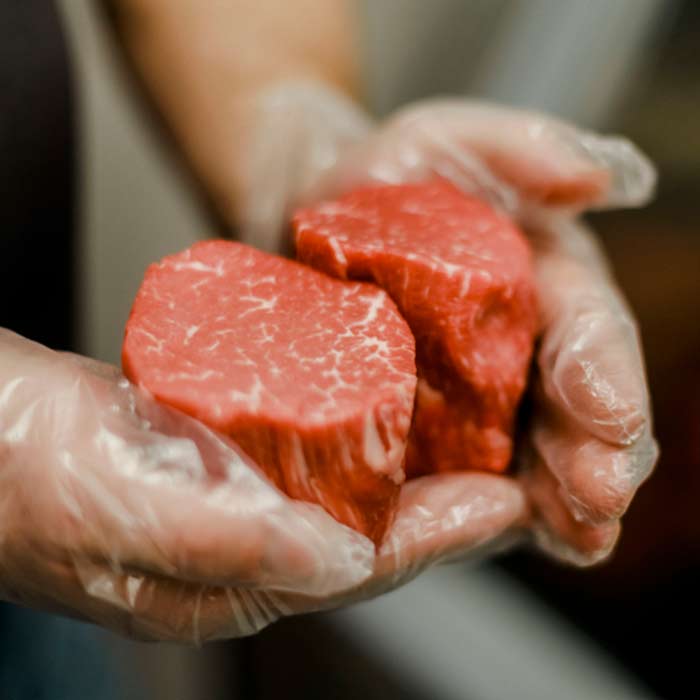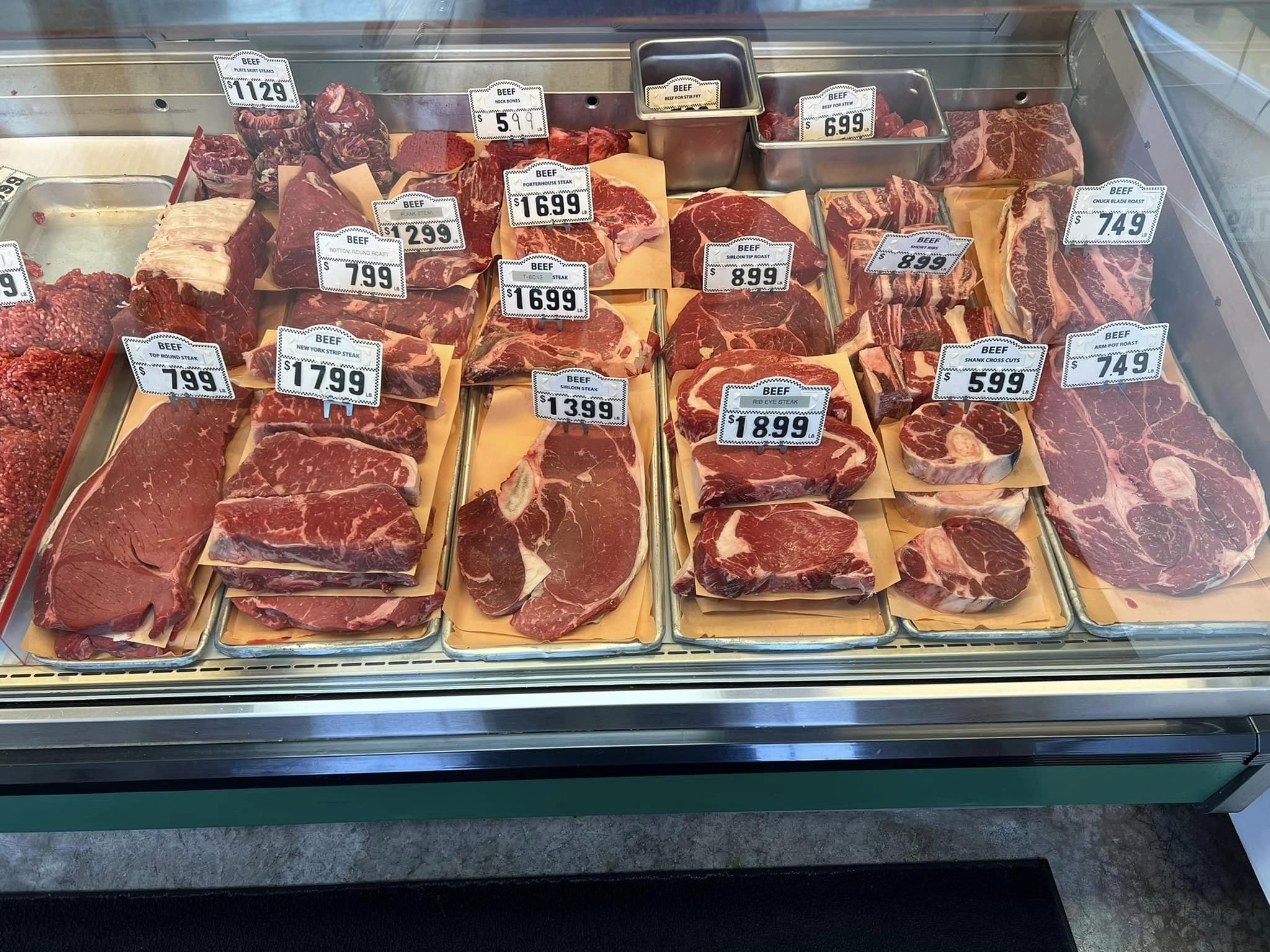Discover Fresh Cuts at Bagley Farms Meat Market Edwardsville IL for Your Following BBQ
Discover Fresh Cuts at Bagley Farms Meat Market Edwardsville IL for Your Following BBQ
Blog Article
Uncover the Art of the Butcher's Cut in a Modern Meat Market
In the ever-evolving landscape of modern meat markets, the butcher's cut has actually transcended its traditional origins, combining olden craftsmanship with modern methods. Today's butchers are not simply cpus of meat; they are knowledgeable craftsmens that emphasize sustainability and honest sourcing. Their knowledge in selecting and preparing cuts tailored to details culinary needs uses an unrivaled dining experience. What genuinely sets the contemporary butcher apart is their ability to forge a deeper connection between customers and the origins of their meat. Just how do these masters balance custom with innovation, and what effects does this have for the future of meat consumption?
Evolution of Butchery Strategies
The development of butchery techniques mirrors an abundant tapestry of advancement and adaptation driven by developments in innovation, adjustments in customer demand, and a much deeper understanding of meat science. Historically, butchery was a craft gave via generations, with methods refined over centuries to maximize yield and taste. The industrial change ushered in automation, changing traditional techniques and making it possible for large-scale handling.
The mid-20th century saw butchery methods better fine-tuned by scientific insights into muscle biology and meat aging, improving both inflammation and preference. Technologies like vacuum cleaner product packaging and refrigeration expanded item shelf-life, enabling butchers to diversify offerings and improve quality assurance. This period likewise noted the increase of specific tools, such as band saws and meat slicers, which increased precision and performance in meat processing.

Electronic systems now aid in tracking animal provenance and optimizing cuts to satisfy certain client choices. Furthermore, a resurgence in artisanal butchery has actually emerged, mixing traditional abilities with modern-day expertise to cater to customers seeking honest and lasting meat options.
Recognizing Meat Cuts
Recognizing the intricacies of meat cuts is essential for both butchers and customers seeking high quality and value. Each cut originates from a different component of the animal, passing on one-of-a-kind tastes, structures, and cooking techniques - bagley farms meat market edwardsville il. Proficiency of these distinctions not only boosts culinary experiences however also maximizes the energy of each carcass. For butchers, accurate cuts reflect skill and regard for the craft, ensuring minimal waste and optimal return.

Understanding muscular tissue structure is crucial; muscular tissues utilized more regularly by the animal tend to be harder and are best suited for slow-moving cooking approaches, while less-used muscle mass, like those discovered in the loin, are more tender and perfect for barbecuing or roasting. Experience with these differences equips customers to make informed choices, boosting their culinary ventures.
Selecting High Quality Meat
Selecting the appropriate meat includes greater than simply choosing a visually enticing item from the screen. bagley farms meat market edwardsville il. The art of picking high quality meat calls for a discerning eye and understanding of specific features that represent freshness and quality. Pay focus to the color; beef must have an intense, cherry-red shade, while lamb must display a soft pink tone, and pork a pale pink. This shows the meat is fresh and hasn't been revealed to oxygen for as well lengthy.
Secondly, take into consideration the marbling, which refers to the white streaks of fat within the muscular tissue. Proper marbling is a key indication of inflammation and flavor, as it melts throughout cooking, boosting the here are the findings meat's juiciness. Remember, higher marbling typically correlates with exceptional quality cuts, such as USDA Prime.
Structure is one more essential aspect; meat should really feel firm to the touch, not slimed or excessively soft. Additionally, be conscious of the fragrance. Fresh meat should have a clean, neutral odor, totally free from any type of sour or repulsive smells.
Combining Cuts With Food Preparation Techniques

Alternatively, harder cuts like brisket and chuck roast are rich in collagen, which damages down right into gelatin when prepared gradually. These cuts are perfect for braising or sluggish roasting, enabling the meat to tenderize in time and create deep, intricate tastes. Likewise, cuts such as brief ribs and pork shoulder prosper with slow-cooking methods, where prolonged cooking times transform their durable structures right into delicious meals.
Lamb shanks and oxtail, which need prolonged food preparation to tenderize, are perfect candidates for stewing or slow simmering. These techniques coax out abundant, hearty tastes while maintaining dampness. By comprehending the distinct qualities of each cut, cooks and home cooks alike can boost their cooking developments, guaranteeing each recipe is both satisfying and unforgettable.
The Butcher's Role Today
Browsing the developing landscape of the modern meat market, the butcher's role today expands beyond plain prep work of cuts. Contemporary butchers are cooking artisans, educators, and supporters for lasting pop over here techniques. They link the gap between the ranch and the fork by making sure ethical sourcing, understanding animal husbandry, and focusing on transparency in the supply chain. This shift shows the expanding consumer demand for quality over amount, where provenance and pet well-being are critical.
Along with crafting exact cuts, butchers currently engage directly with consumers, providing cooking suggestions and tailoring selections to match private demands and choices. Their expertise in meat aging, marbling, and taste accounts equips customers to make enlightened decisions, enhancing their culinary experiences. This customized service exhibits the butcher's developing role as a relied on expert in the kitchen area.
Moreover, butchers are critical in lessening waste, making use of entire pets to produce varied products such as sausages and supplies. This detailed technique not only appreciates the pet however also aligns with modern sustainability goals. In this method, the modern-day butcher embodies both practice and development, adjusting to navigate to this site an ever-changing market while maintaining the virtuosity and stability of their craft.
Conclusion
The contemporary butcher's craft elaborately weaves standard methods with contemporary advancements, highlighting sustainable practices and honest sourcing. Proficiency in comprehending diverse meat cuts and quality indications equips butchers to supply educated referrals, lining up certain cuts with optimum food preparation approaches. This competence not only boosts culinary experiences but additionally reinforces the link in between consumers and the beginnings of their food. By recognizing historical techniques while accepting contemporary needs, the butcher's role stays important in today's innovative meat market (bagley farms meat market edwardsville il).
Report this page